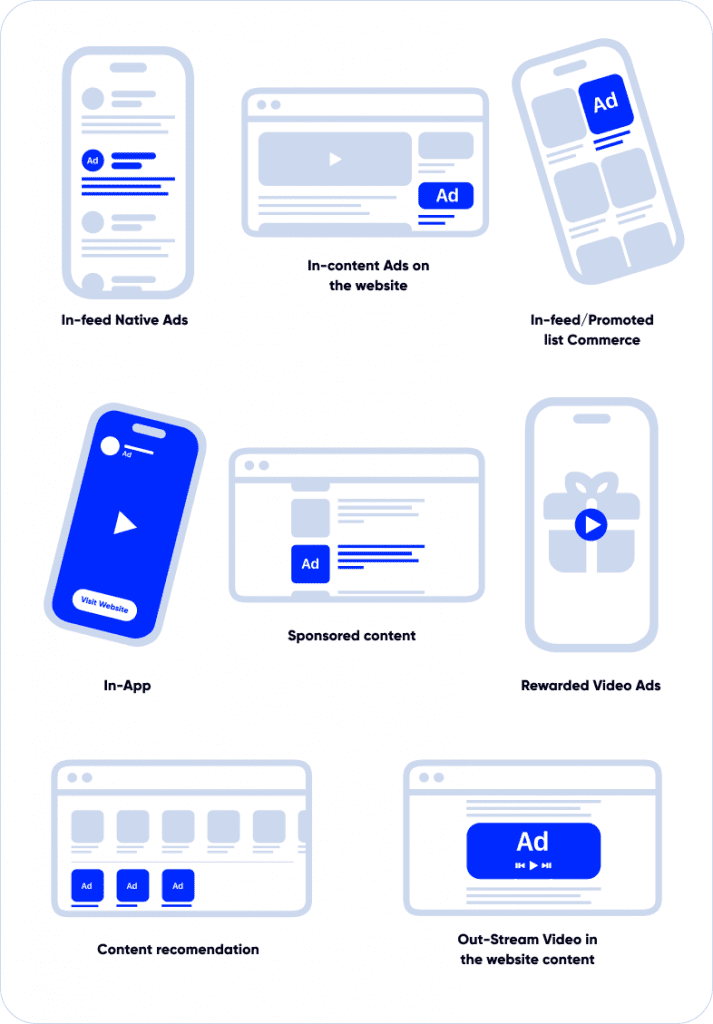What is Native ads?
What is it?
Native ads is paid media designed to match the content of a media source. As we speak about programmatic, it is purchased automatically through specialized platforms (DSP, SSPs) for displaying users at the right moment. The key feature of native ads is that they are non-disruptive for the reader and therefore get more user attention.
Examples of native advertising would be out-stream video on content of webpages or product recommendation on marketplaces.
Ad formats
Ad format of native ads depends on where an advertisement would be placed. Generally, it may include ad copies, image, animation, and/or video.
Placement Types:
1. In the feed of content, – i.e. as an item inside the organic feed/grid/listing/carousel;
2. In the atomic unit of the content – i.e. in the article page or single image page;
3. Outside the core content – i.e. in the ads section on the right rail, as a banner- style placement near the content;
4. Recommendation widget, most commonly presented below the article content.

What goals can it help achieve?
Native ads is one of the best type of advertising to:
- increase conversions;
- improve customer experiences and loyalty;
- maintain users interest to brands’ products or services;
- drive revenue.
As most users see native ads as more trustworthy and engaging than traditional ads, it works. And using these ad formats on the down-sales funnel stages for advertising, brands can get more clicks, attract more high-intent users to sites, and get more conversions compared to other ad formats.
Payment model
The most often used payment model for native advertising is CPM (cost per 1000 miles).
Benefits
- It get more users’ attention and increase CTR;
- It creates positive users’ experience;
- Native ads overcome banner blindness and ad blockers.